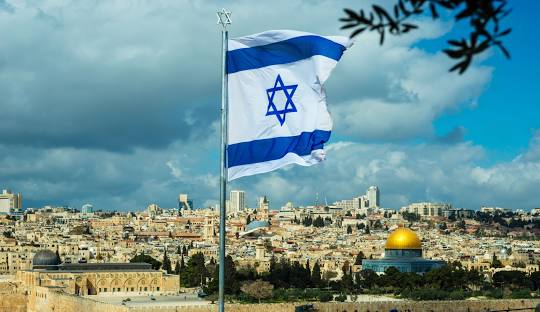Egypt, which has a border with both Israel and Gaza, has had a tense relationship with Hamas for a long time. This is not the least bit surprising given that Hamas originated as a breakaway group of the Muslim Brotherhood. Despite the fact that Cairo signed a formal peace treaty with Israel in 1978 at Camp David, the Egyptian population has typically been more pro-Palestinian than successive Egyptian authorities, with the exception of the Muslim Brotherhood-led government that was overthrown in 2013. Although Cairo has served as a mediator between Hamas and Israel during times of conflict, Egypt has always been suspicious of a desire by some on the Israeli right for Egypt to take responsibility for Gaza. This desire is based on the fact that Egypt administered the coastal strip during the years 1948 and 1967.
Jordan
Jordan has also signed an official peace treaty with Israel, albeit it did so in 1994 rather than Egypt. The fact that more than 2 million Palestinians are registered as refugees in Jordan, where the majority of them also enjoy full Jordanian statehood, and an even bigger percentage of the people may trace their ancestors to Palestinian origin, complicates Jordan’s lens on Israeli-Palestinian relations. As an arm of the Jordanian government, the Waqf is responsible for the administration of the Islamic institutions located in and around al-Haram al-Sharif (often referred to by Jews as the Temple Mount) in Jerusalem. This draws Amman into issues that arise in the vicinity of the holy site. Israel, much like Cairo, has a tendency to be attentive to the opinions held by Jordan.
The Lebanon.
Israel has been involved in two major battles with its neighbour to the north, the most recent of which occurred in 2006 during the devastating war with the Shia organisation Hezbollah, which is considered to be one of the most formidable of Iran’s proxies. Israel has long been concerned about the possibility of fighting a war on two fronts, one with Hamas and one with Hezbollah. Recently, Hezbollah has been hampered by a number of factors, including Lebanon’s protracted political sclerosis and economic collapse, both of which have functioned as restricting factors. It is unknown whether Hezbollah is preparing for its own offensive in the event that there is a ground invasion of Gaza or if it is simply signalling to its supporters despite the fact that it has allowed rocket fire in Lebanon in the past two weeks, mostly by Palestinian factions. The rocket fire has come from Palestinian factions.
The Syria
Since the beginning of the conflict in Syria, Israel has carried out a huge number of strikes within the nation. The majority of these strikes have been directed against supply routes and storage sites for weapons imported from Iran, which Israel asserts are bound for Hezbollah and Hamas. Iranian proxies and assets have been recorded functioning in Syria for a very long time, despite the fact that the direct threat to Israel from Syria has looked to have diminished considerably over the previous couple of years. However, Israel launched missile strikes on Syria’s two main airports one week ago, one in Damascus and the other in the northern city of Aleppo. The strikes caused damage to the landing strips at both airports, possibly with the intention of preventing the runways from being used for military traffic in the coming weeks.
Iran
According to reports, Tehran has warned Israel that it may feel obligated to act in the event of an Israeli ground invasion of Gaza. Any regional response to an Israeli ground assault is likely to be determined by Tehran, and it seems likely that this will be the case. Iran, Israel’s adversary for a very long time, has traditionally relied on proxies to drive its actions; as a result, there is a lot of interest in groups that are affiliated with it all across the Middle East. Iran does possess the missile capability to hit Israel (as Saddam Hussein’s Iraq did during the Gulf War), but the pre-positioning of US and other western ally naval assets in the region in recent days appears to be aimed at signalling the repercussions of an intervention from Iran. This is the case despite the fact that Iran does possess this capability.
Iraq
This week has seen a revival in attacks on US bases in Iraq by Iranian supported organisations, which signifies the addition of another layer of complexity. Alongside around 1,000 soldiers from other nations that are part of the international coalition that was established to battle the jihadist group Islamic State, the United States presently has approximately 2,500 troops stationed at three locations in Iraq.
The strikes came after Iran-aligned groups escalated their threats against the United States prior to the attacks. One of them, the Hezbollah Brigades, issued a demand that the United States “leave” Iraq, threatening that if they did not, “they will taste the fires of hell.”
The Yemen
Houthi rebels in Yemen, who are supported by Iran, have been able to effectively shoot drones deep within Saudi Arabia, primarily aiming at oil sites. Another aspect to consider is whether or not they have the range or capability to reach Israel. However, Houthi missiles and drones are able to pose a threat to shipping in the Red Sea, the Arabian Sea, and the Gulf of Aden. The fact that a US destroyer was able to intercept missiles and drones that were being launched from Yemen on Thursday – which a spokeswoman for the Pentagon stated had been sent “potentially towards targets in Israel” – has increased the stakes significantly.
